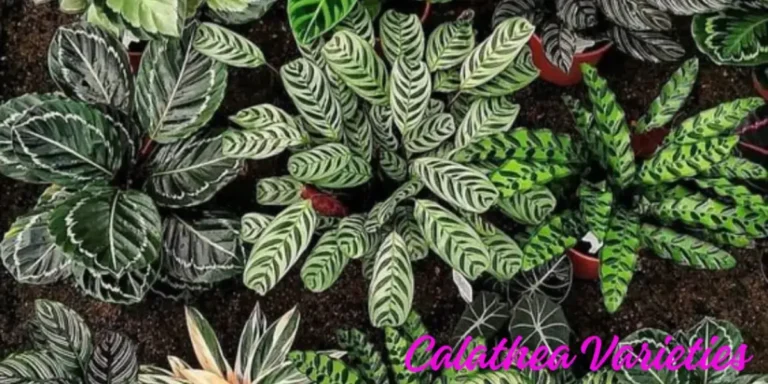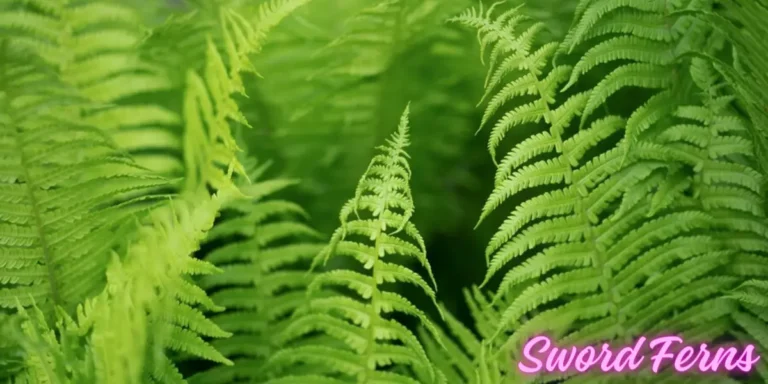How To Grow And Care Little Lime Hydrangeas
Little Lime Hydrangeas is a cute plant that doesn’t take up much space but still looks amazing in gardens. It’s like a tiny burst of green and pink in your yard! You can grow it in pots or in the ground—it’s super easy to take care of. Whether you’re a pro gardener or just starting out, Little Lime Hydrangea is a great choice to make your garden look beautiful
Little Lime’ Hydrangeas Care
Little Lime” hydrangeas thrive in well-draining soil with a short acidic pH from 5.5 to 6.5. They prefer consistently moist soil but avoid waterlogging as it can lead to root rot. Plant them in an area with partial to full sun, ensuring they receive at least 4-6 hours of sunlight daily. Maintain soil moisture during hot weather, and mulching should be considered to conserve moisture. Fertilize with a balanced slow-release fertilizer in spring, avoiding high-nitrogen formulas to prevent excessive foliage growth at the expense of blooms.
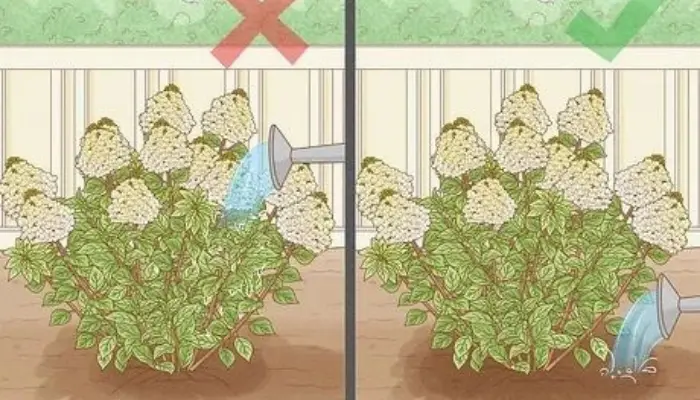
Light:
- Little Lime” hydrangeas thrive in areas with partial to full sun, receiving at least 4-6 hours of sunlight daily.
- Optimal sunlight exposure promotes sturdy growth and prolific blooming throughout the growing season.
- In regions with intense afternoon sun, providing shade during the hottest part of the day can prevent leaf scorch.
- While they tolerate some shade, insufficient sunlight may reduce flowering and leggy growth.
- Regularly monitor sunlight patterns throughout the day to ensure consistent light exposure for healthy plant development.
soil:
- “Little Lime” hydrangeas prefer well-draining soil rich in organic matter, with a slightly acidic pH between 5.5 and 6.5.
- Amending heavy clay soil with organic compost improves drainage and enhances soil structure, promoting root health.
- Mulching with organic materials helps retain soil moisture, suppresses weed growth, and regulates soil temperature.
- Avoid soggy conditions, as excessively wet soil can cause fungal diseases.
- Periodically check soil moisture levels, ensuring it remains moist but not soggy.
Temperature:
- “Little Lime” hydrangeas thrive in temperate climates with moderate temperatures, ideally between 60°F to 70°F (15°C to 21°C).
- They can tolerate brief periods of heat and cold, but prolonged knowing to high temperatures can stress the plant.
- Providing afternoon shade in regions with hot summers can help protect the plant from heat stress.
- During winter, protect the plant from freezing temperatures.
- Handle weather forecasts and take appropriate measures to shield the plant from temperature extremes to ensure its health and vitality.
Fertilizer:
- Give a balanced slow-release fertilizer formulated for flowering shrubs in early spring to promote healthy growth and abundant blooms.
- Avoid high-nitrogen fertilizers, as they can stimulate disturbed growth at the expense of flower production.
- Follow the recommended advisement and instructions on the fertilizer package to prevent overfertilization, which can damage the plant.
- Side-dress with compost or organic matter annually to replenish soil nutrients and improve soil structure.
- Refrain from fertilizing “Little Lime” hydrangeas in late summer or fall to avoid encouraging tender growth susceptible to frost damage.
Types Of Little Lime’ Hydrangeas
Little Lime® Panicle Hydrangea (Hydrangea paniculata’ Jane’)
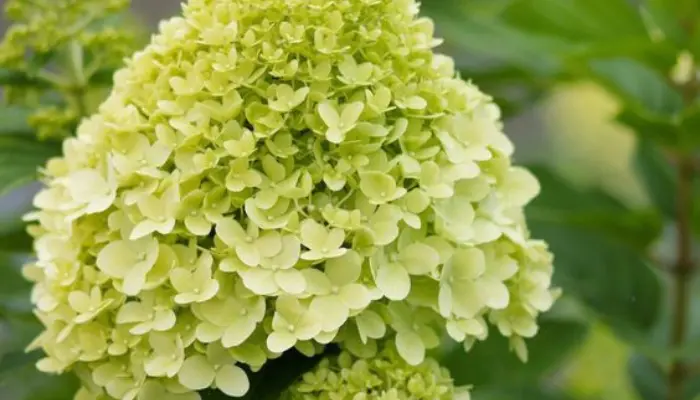
Description: The Little Lime Panicle Hydrangea is a compact, hardy shrub that reaches about 3-5 feet in height and width. It is known for its stunning lime-green flowers that bloom in mid-summer. The blossoms gradually turn pink and then a rich burgundy in the fall. This hydrangea thrives in full sun to part shade and is remarkably adaptable to various soil types, provided they are well-drained. The plant’s sturdy stems prevent the large flower heads from drooping, even after heavy rain.
Little Quick Fire® Hydrangea (Hydrangea paniculata ‘SMHPLQF’)
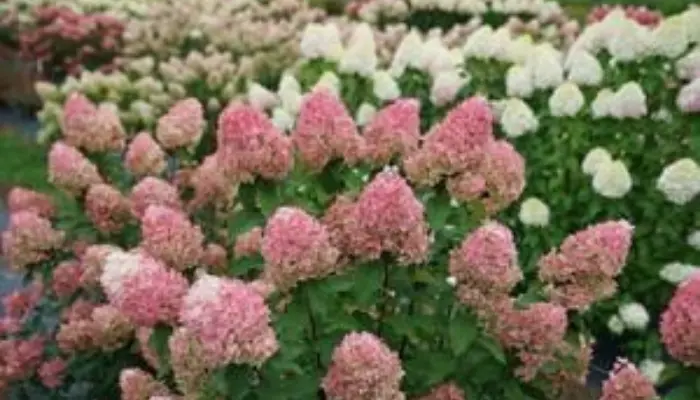
Description: Little Quick Fire® is a dwarf variety that blooms earlier than most panicle hydrangeas. Its white flowers quickly transform into pinkish-red as the season progresses. Growing to a height of 3-5 feet, it is perfect for smaller gardens or as a container plant. This hydrangea is celebrated for its ease of maintenance, disease resistance, and ability to tolerate various light conditions, from full sun to partial shade. It is also relatively drought-tolerant once established.
Bobo Hydrangea (Hydrangea paniculata ‘ILVOBO’)

Description: Bobo Hydrangea is a compact variety, standing about 2.5-3 feet tall and wide. Its prolific blooms are initially white but take on pink and red hues as the season advances. This hydrangea is ideal for small gardens, borders, and container planting. It requires minimal pruning and is incredibly easy to care for, making it a favorite among busy gardeners. Bobo thrives in full sun to part shade and prefers moist, well-drained soils.
Fire Light Hydrangea (Hydrangea paniculata ‘SMHPFL’)

Description: The Fire Light® Hydrangea grows slightly more prominent, reaching up to 6 feet in height and width. Its large, cone-shaped flower clusters start as a creamy white before transitioning to a vivid pink and finally to a deep red in the fall. This hydrangea’s robust nature makes it an excellent choice for mixed borders and mass plantings. It enjoys full sun to partial shade and tolerates different soil conditions as long as the soil is well-drained.
Zinfin Doll® Hydrangea (Hydrangea paniculata ‘SMNHPPH’)
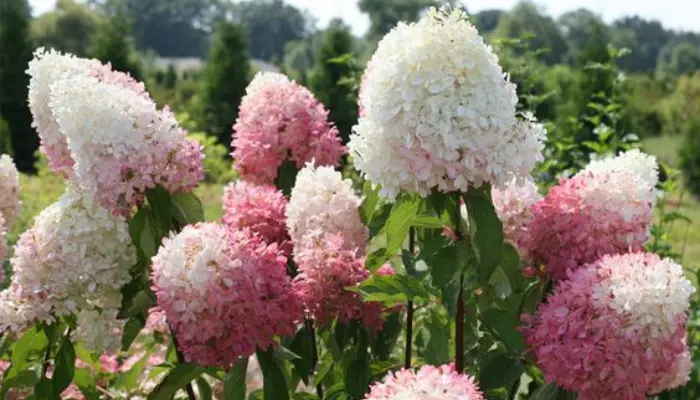
Description: Zinfin Doll® Hydrangea is known for its spectacular two-tone flower heads that begin white and gradually develop a rich pink hue from the base upwards. This unique coloration makes it a standout in any garden. It grows to about 6-8 feet tall and wide, making it one of the larger varieties on this list. Zinfin Doll® is easy to grow, requires minimal care, and performs well in full sun to partial shade. It is also noted for its long blooming period, extending from mid-summer to fall.
Propagating ‘Little Lime’ Hydrangeas
Propagating’ Little Lime’ Hydrangeas is a straightforward process that can be done using stem cuttings. Here’s a step-by-step guide:
Materials Needed:
- Sharp pruning shears
- Rooting hormone (optional)
- Small pots
- Potting soil
- Plastic bags or a propagation tray with a lid
- Watering can
Steps:
- Select a Healthy Plant: Choose a healthy ‘Little Lime’ Hydrangea plant with robust and vigorous growth. The best time to take cuttings is when the plant is initially growing.
- Take Cuttings: Using sharp pruning shears, cut a 4-6 inch long stem from the plant. Ensure the stem has at least two to three leaf nodes (the spots where leaves are or were attached).
- Prepare the Cuttings: Remove the lower leaves from the bottom half of the cutting. This helps reduce water loss and encourages root growth. If you have rooting hormone, dip the cut end of the stem into the hormone powder. This step is optional but can increase the chances of successful rooting.
- Plant the Cuttings: Fill small pots with soil potting and make a hole in the center. Insert the cut end of the stem into the hole and gently press the soil around it to secure the cutting. You can plant multiple cuttings in one pot, but make sure they are spaced apart.
- Water and Cover: Water the cuttings thoroughly after planting. Cover the pot with a plastic bag or place it in a propagation tray with a lid to create a humid environment. This helps keep the cuttings moist and encourages root growth. Make sure the plastic does not touch the leaves.
- Provide Care: Place the pots in a warm, bright location without direct sunlight. Check the soil regularly to ensure it stays moist but not soggy. Open the plastic covering occasionally to allow fresh air to circulate and prevent mold growth.
- Wait for Roots to Develop: Roots usually develop in 4-6 weeks. You can check for root growth by gently tugging on the cuttings. If you feel resistance, roots have likely formed.
- Transplant the New Plants: “After the cuttings have developed roots, they can be moved to bigger pots or planted directly in the garden.”Gradually acclimate them to outdoor conditions if they were rooted indoors.
Common Pests & Plant Diseases
Common pests and diseases affecting ‘Little Lime’ Hydrangeas include aphids, which can cause distorted growth; spider mites, leading to yellowed, stippled leaves; and powdery mildew, which creates white, powdery patches on foliage. Additionally, leaf spot diseases can cause brown or black spots on leaves, while root rot, due to poor drainage, can lead to wilting and plant decline.
Where is the best place to plant little lime hydrangeas?
Partial shade or morning sun with afternoon shade; moist, well-draining soil with organic matter; ample space to grow.
Do you cut back little lime hydrangea?
Yes, you can cut back Little Lime hydrangeas.
What month do little lime hydrangeas bloom?
Little Lime hydrangeas typically bloom from mid-summer to fall.
Can I use Miracle Grow on hydrangeas?
Yes, you can use Miracle-Gro on hydrangeas, but it’s essential to follow the instructions on the product label carefully.
Why is my little lime hydrangea dying?
Several factors could contribute to a Little Lime hydrangea dying, including overwatering, underwatering, poor soil drainage, inadequate sunlight, pests, diseases, or planting in unsuitable conditions. Evaluating these factors can help determine the cause and address the issue effectively.
Do Limelight hydrangeas lose leaves in winter?
Yes, Limelight hydrangeas typically lose their leaves in winter, as they are deciduous shrubs.

